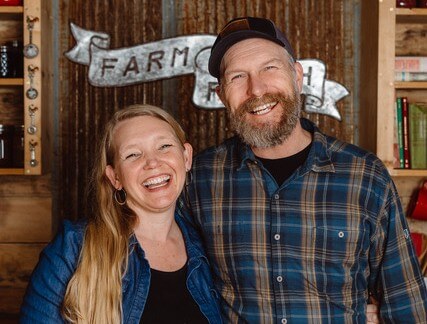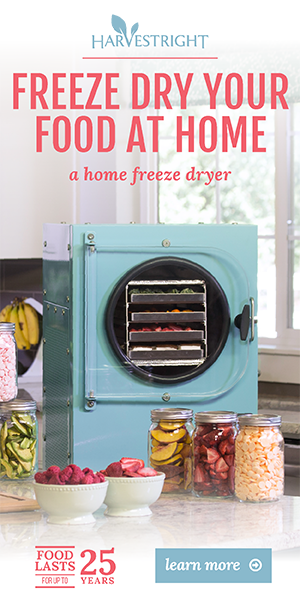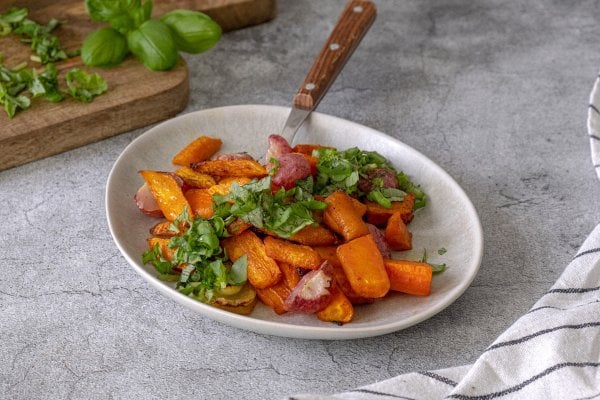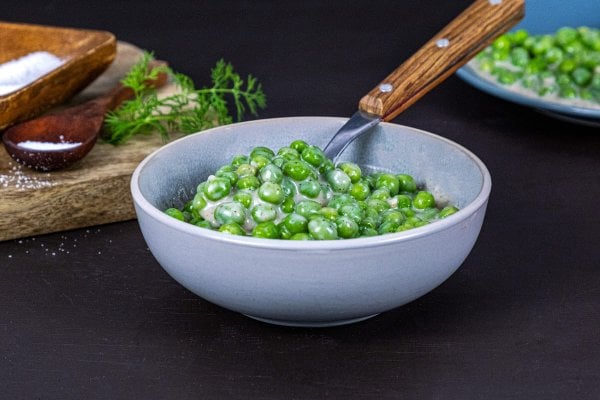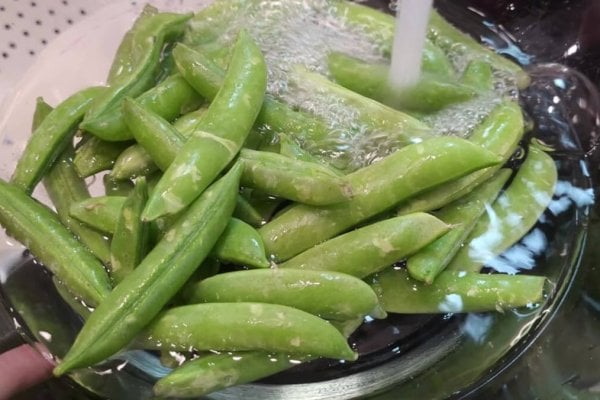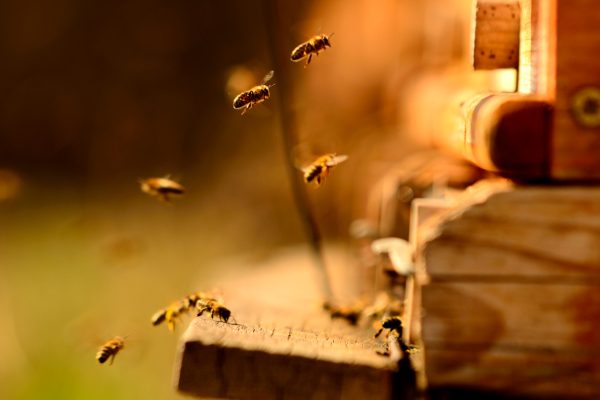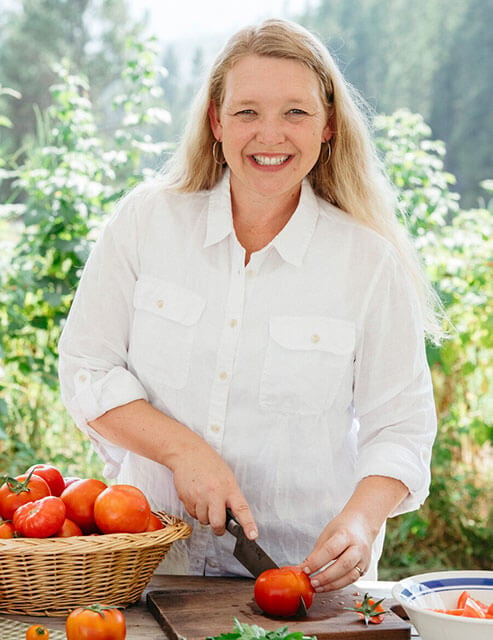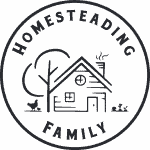You might traditionally make eggnog at Christmastime to serve while making a wreath or a DIY Christmas garland, but you can actually make homemade eggnog any time of the year. This easy recipe is made without alcohol, but if you prefer a little rum, check out our aged eggnog recipe here.
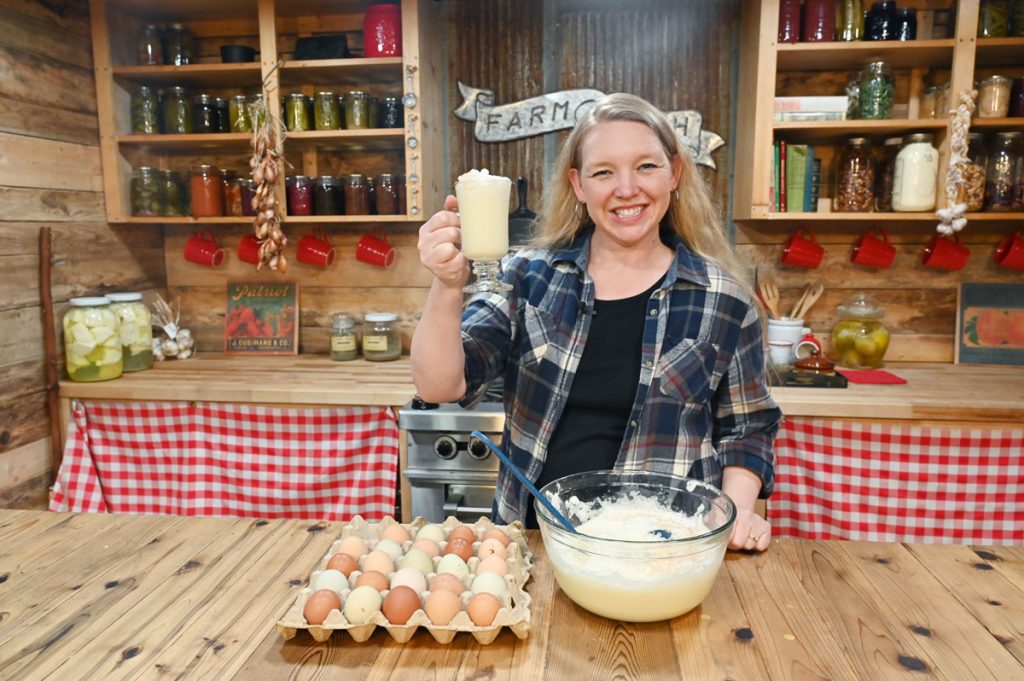
Table of Contents
ToggleWhy I Love Homemade Eggnog
While reading Farmer Boy by Laura Ingalls Wilder, I came across the part where Pa is working out in a really hot hayfield. He says that a man can get more done in his twelve hours of the day if he has all the eggnog he can drink morning and evening.
I thought, eggnog? During the summer and not at Christmastime? That sounds delicious! Since we have all the eggs we can handle during the summer months, I gave it a try. If you find yourself in the same situation, first learn how to safely handle farm fresh eggs.
Then, check out all these clever ways to make good use of your eggs.
- 5 Ways to Use Up Excess Eggs
- How to Water-Glass Fresh Eggs
- How to Make Homemade Egg Noodles
- How to Freeze Eggs
- How to Freeze Dry Eggs
- How to Pickle Eggs
If you’d like to get eight different egg preservation methods all in one place you can grab our FREE downloadable booklet here.
After coming across the passage about eggnog in Farmer Boy, I went straight away to The Little House Cookbook, and sure enough, there is a recipe for non-alcoholic eggnog. I did make some slight alterations of my own to make it more suitable to our liking. Feel free to play with the recipe below to make it your own!
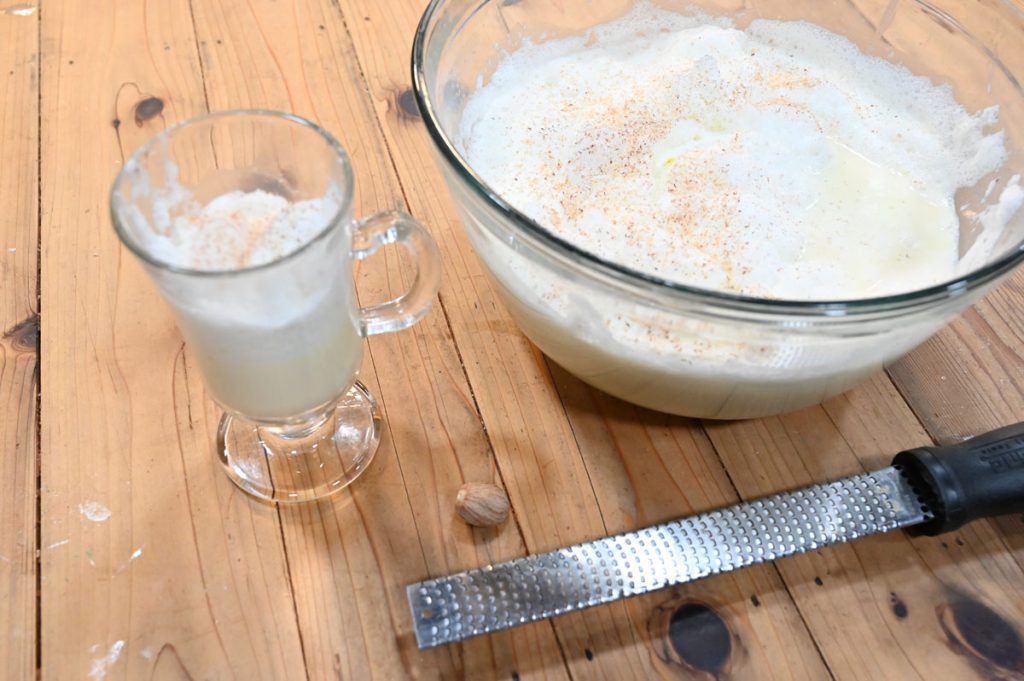
What Is Eggnog?
Classic eggnog is a traditional beverage that has been a holiday favorite for centuries. It’s a creamy mix of milk, cream, sugar, whipped eggs, and spices like nutmeg and cinnamon.
It started in 17th-century England as a warm ale punch for the aristocracy, and in today’s day is a rich and luxurious drink we all enjoy during the holidays (and now the summertime, too!).

Raw Egg Safety
Enjoying homemade eggnog safely is key, and the main concern is consuming raw eggs. Traditional recipes use raw or lightly cooked eggs, which can carry salmonella if not handled right.
It’s important to understand and lower these risks for a safe eggnog experience. Using pasteurized eggs is often recommended, but when we use best practices when handling our farm fresh eggs, we don’t find that necessary.
By following these tips, you can greatly lower the risk of contamination and confidently enjoy a safe and delicious homemade eggnog:
- Use Pasteurized Eggs – If you do not have properly handled farm fresh eggs, choosing pasteurized eggs is an easy way to cut down salmonella risk. These eggs have been heat-treated to kill bacteria.
- Cook Your Eggnog – Cooking the egg mixture gently can also make it safer. In step 2, pour the milk, cream, and maple syrup into a saucepan and stir constantly over medium heat until it reaches a simmer. To combine with the egg yolks, take a small amount of the milk mixture and add it to the egg yolks. Whisk the egg yolks to temper the eggs, and repeat until all of the milk mixture is added to the egg mixture. Pour the egg mixture back into the saucepan and whisk on medium heat until it reaches 160°F. You can skip folding in the egg whites or alternately use whipped cream in step 3.
- Practice Good Hygiene – Always wash your hands, utensils, and surfaces well before and after handling eggs. This helps prevent cross-contamination.
- Freshness Matters – Make sure to use fresh, clean eggs, and always promptly store your eggnog in the fridge to keep it safe to drink.

Eggnog Variations
As mentioned before, you can stick with this basic recipe or play around to create a signature flavor of your own. Here are a few ideas to get you started:
- Extracts – This homemade eggnog recipe is family-friendly (aka alcohol-free) but you can add different flavors with extracts such as vanilla, maple, hazelnut, almond, rum, etc.
- Non-Dairy – For those with dietary needs, dairy-free eggnog is a great option. Use almond, coconut, or oat milk instead of regular milk.
- Garnishes – Don’t forget about toppings to enhance your eggnog. Whipped cream adds a luxurious feel, while cinnamon or nutmeg adds a festive touch. For a special treat, try a drizzle of caramel sauce or cocoa powder.

Tips for the Best Homemade Eggnog
Making the best homemade eggnog includes choosing top-notch ingredients and using the right cooking methods. Here are my best tips to make your eggnog a hit at holiday parties.
- Opt for Fresh and Quality Ingredients – Farm-fresh eggs, whole milk, and heavy cream are key to making your eggnog rich and creamy.
- Balance Your Spices – A little spice goes a long way to enhance the flavor (especially when using fresh ingredients). Start conservatively and increase to your taste.
- Slow and Gentle Cooking – If you choose to heat your eggnog, be patient! Heat the milk slowly to avoid curdling, and stir constantly to make sure it thickens evenly.
- Achieving Perfect Frothiness – Eggwhites are the secret to a light and airy homemade eggnog. Whisk your egg whites separately and gently fold them into the milk.

How to Make Eggnog
Supplies Needed
- Bowls – You will need a separate clean bowl from your main mixing bowl to whip your egg whites.
- Immersion Blender – An immersion blender is my preferred tool, but if you don’t have one, a hand mixer works too.
- Silicone Spatula – These silicone spatulas work great to gently fold in the egg whites.
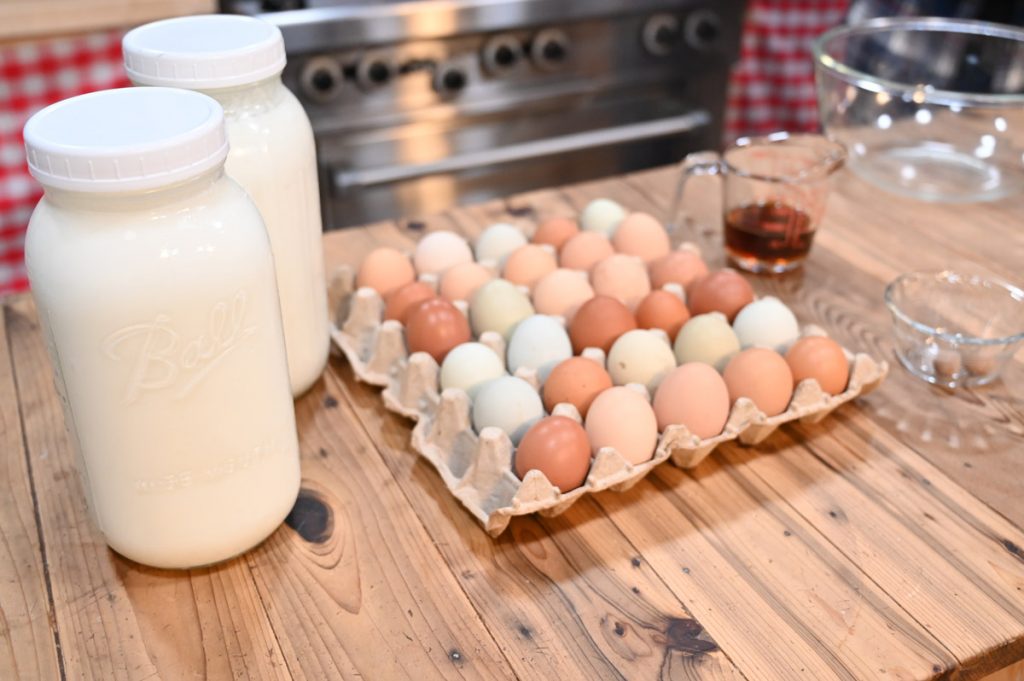
Ingredients Needed
- Eggs – It’s best to use eggs you trust in this recipe. We have a surplus of farm-fresh eggs during the summer months, which makes this the perfect way to use them up! I wouldn’t recommend making this with store-bought eggs.
- Sweetener – The original recipe in The Little House Cookbook called for 1/2 cup white sugar, but we adjusted that to 1/4 cup maple syrup and found it was perfectly sweet.
- Milk & Cream – This is where you can play with the ratios to make it exactly how you like. If you want it thicker and more reminiscent of store-bought eggnog, then use all heavy cream. If you want to omit the cream and keep it lower in calories and fat, use all milk. We found the recipe below to be a perfect consistency and richness.
- Nutmeg – Freshly grated nutmeg will add the best flavor, but you can use ground nutmeg if that’s what you have on hand. Feel free to add in any additional spices you like, such as cinnamon, ground ginger, cardamom, etc.
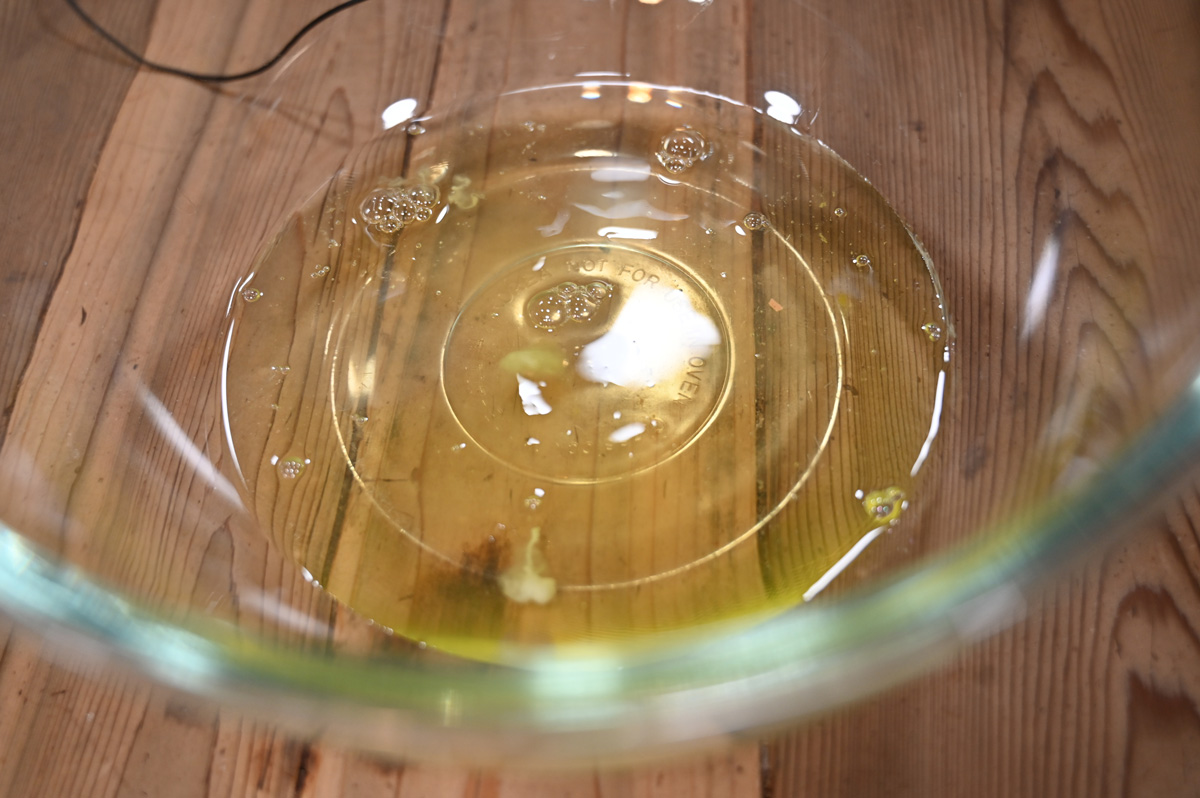
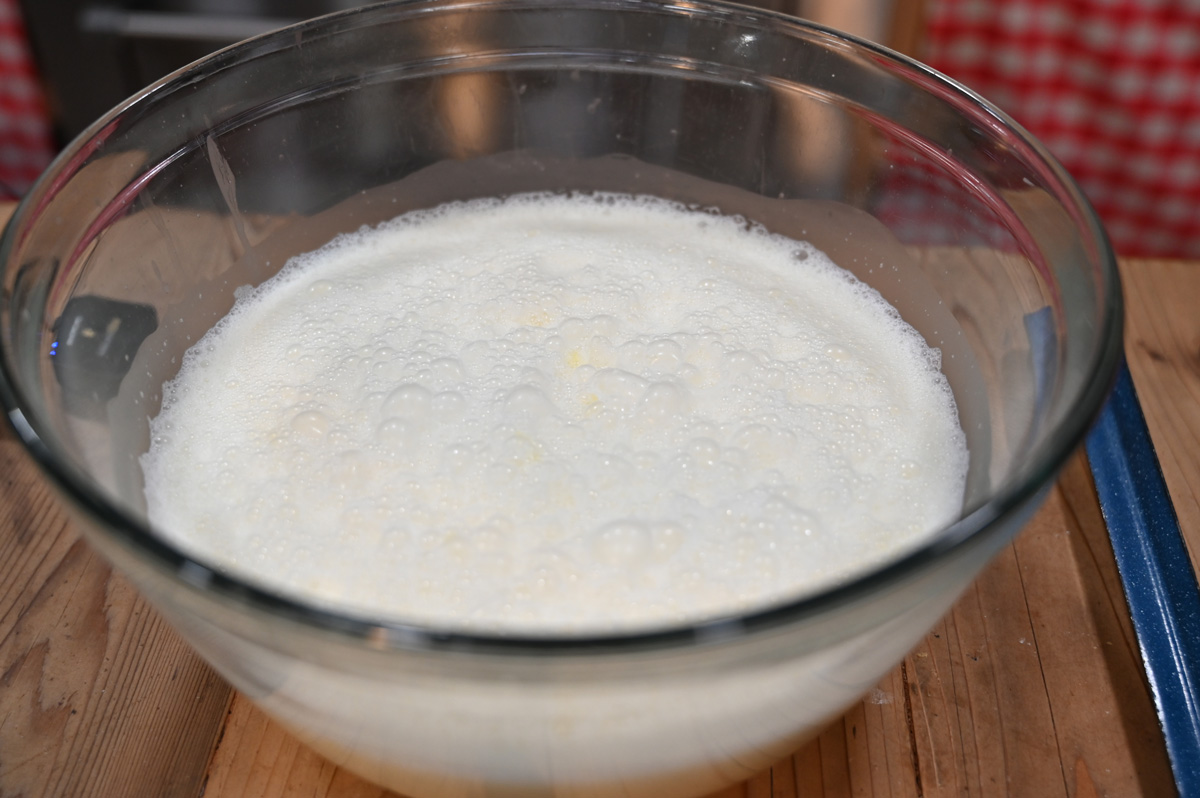
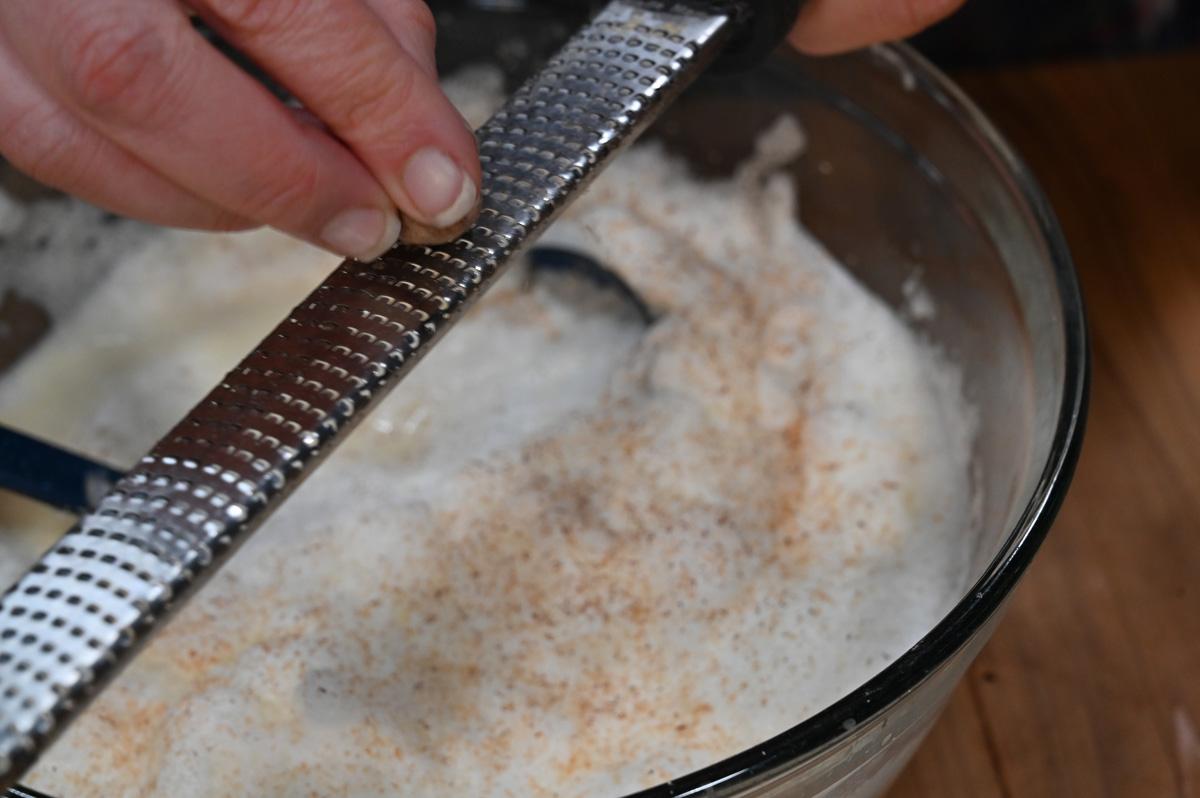
How to Make Homemade Eggnog Step-by-Step
- The first step is to separate the eggs into two bowls. One bowl for yolks, one for whites.
- Add maple syrup, milk, and cream to the bowl of egg yolks. Whisk the egg yolk mixture well by hand or using an immersion blender.
- With a clean immersion blender (or a whisk attachment), whip egg whites until soft peaks form. I like to add a pinch of cream of tartar because this helps the whites whip up faster and hold the peaks better.
- Gently fold the egg whites into the eggnog mixture until it’s all incorporated.
- Grate fresh nutmeg over the top of the bowl, ladle into a glass, and top with more freshly grated nutmeg.
- Enjoy!
Making eggnog couldn’t be easier. There’s no reason we can’t enjoy this delicious treat any time of year. To make it refreshing on a hot summer day, pour the eggnog over ice. For a warm treat in the winter, gently warm it on the stovetop until steaming (but not boiling).
Did you make this recipe? If so, we’d love for you to leave a star rating on the recipe card below. Then snap a photo and tag us on social media @homesteadingfamily so we can see!

How to Store Eggnog
IF you find yourself with any leftovers, follow these storage tips to keep your homemade eggnog fresh.
- Refrigeration – Always keep your homemade eggnog in the coldest part of the fridge. This should be below 40°F (4°C).
- Storage Containers – Use airtight glass or plastic containers for storing eggnog. This keeps air out, which helps preserve the flavor and texture.
- Shelf Life – Homemade eggnog, especially with alcohol, can last up to three days in the fridge. Non-alcoholic versions should be used within one to two days for safety and the best taste.
- Using Leftovers – Use your leftover homemade eggnog within the recommended shelf-life in recipes like lattes, eggnog pancakes, or French toast. Homesteading Hack: It’s important to keep the eggnog consistency when storing it. Shake or stir the eggnog before serving so that the ingredients are mixed.
FAQ
Eggnog is a holiday drink made with cream, sugar, eggs, milk, and cinnamon. It’s a cozy drink enjoyed during the holidays.
Homemade eggnog can be safe if you take the right steps. Use properly handled farm fresh eggs or cook them to avoid salmonella.
Yes, there are many eggnog variations. You can make it without alcohol, use dairy-free ingredients, or add toppings like whipped cream.
Store homemade eggnog in the fridge in a sealed container. Knowing its shelf life keeps it safe. You can also use it in other recipes if you have extra.
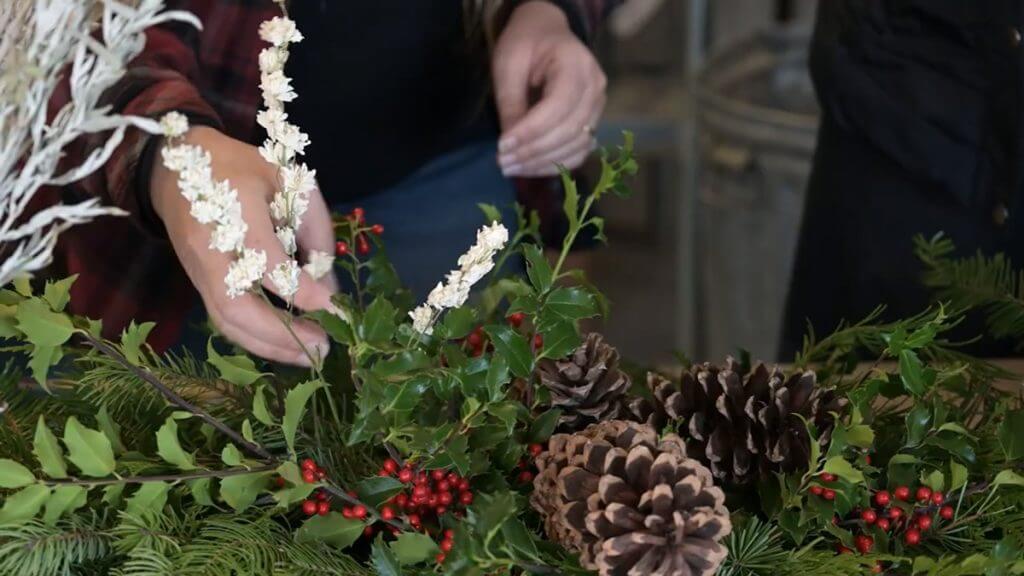
Other Posts You May Enjoy
- Aged Eggnog Recipe – A Holiday Classic
- 5 Ways to Use or Preserve Extra Eggs
- How to Make a Wreath
- Enjoying Stress-Free Holidays
- DIY Christmas Garland
- Homesteader’s Christmas Gift Guide 2023
- Homemade Christmas Gifts Guide
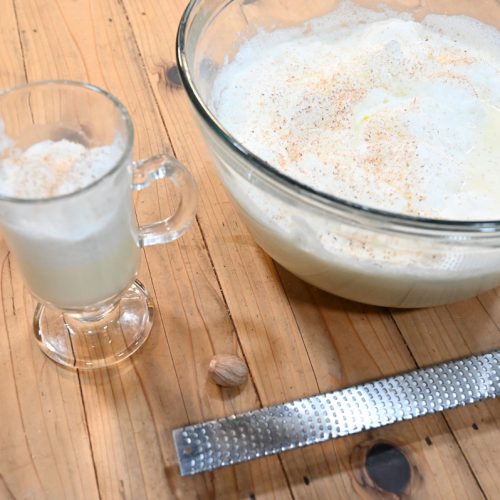
Easy Homemade Eggnog
Equipment
- Immersion Blender Whisk attachment is helpful but optional
Ingredients
- 6 eggs separated
- 1/4 cup maple syrup
- 4 cups whole milk
- 2 cups heavy cream
- 1/2 teaspoon ground nutmeg freshly grated
Instructions
- Separate the eggs into two bowls. One bowl for yolks and one for whites.
- Into the bowl of egg yolks, add maple syrup, milk and heavy cream.
- Blend well using an immersion blender.
- Clean the immersion blender (or swap it with the whisk attachment). Add optional cream of tartar to egg whites and whip until soft peaks form.
- Gently fold the egg whites into the eggnog mixture until it’s all incorporated.
- Grate fresh nutmeg over the top of the bowl, ladle into a glass, and top with more freshly grated nutmeg. Enjoy!
Video
Notes
- Be sure to use farm-fresh eggs you trust!
- Adjust this recipe to your liking. Increase or reduce the amount of cream, add in additional spices such as cinnamon, ground ginger, and cardamom.

